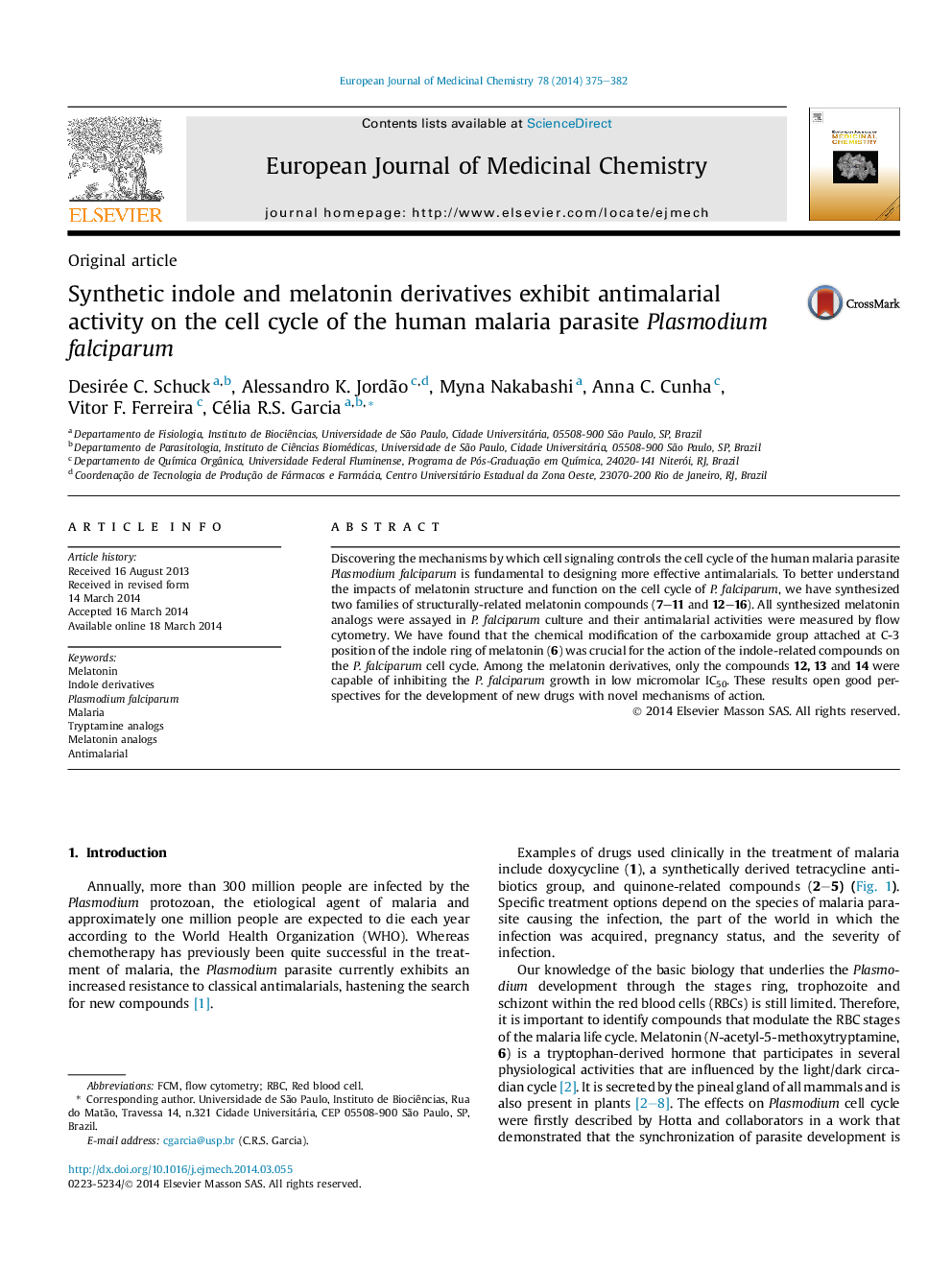| کد مقاله | کد نشریه | سال انتشار | مقاله انگلیسی | نسخه تمام متن |
|---|---|---|---|---|
| 1394185 | 1501138 | 2014 | 8 صفحه PDF | دانلود رایگان |
• Bulky side chains at the C-3 position decrease the potency of ligation of new indole.
• Methoxy group at position 5′ it's important for the activity of melatonin (6) on its receptor.
• 12, 13 and 14 are new proposed antimalarials with an μM range IC50.
Discovering the mechanisms by which cell signaling controls the cell cycle of the human malaria parasite Plasmodium falciparum is fundamental to designing more effective antimalarials. To better understand the impacts of melatonin structure and function on the cell cycle of P. falciparum, we have synthesized two families of structurally-related melatonin compounds (7–11 and 12–16). All synthesized melatonin analogs were assayed in P. falciparum culture and their antimalarial activities were measured by flow cytometry. We have found that the chemical modification of the carboxamide group attached at C-3 position of the indole ring of melatonin (6) was crucial for the action of the indole-related compounds on the P. falciparum cell cycle. Among the melatonin derivatives, only the compounds 12, 13 and 14 were capable of inhibiting the P. falciparum growth in low micromolar IC50. These results open good perspectives for the development of new drugs with novel mechanisms of action.
Figure optionsDownload as PowerPoint slide
Journal: European Journal of Medicinal Chemistry - Volume 78, 6 May 2014, Pages 375–382
